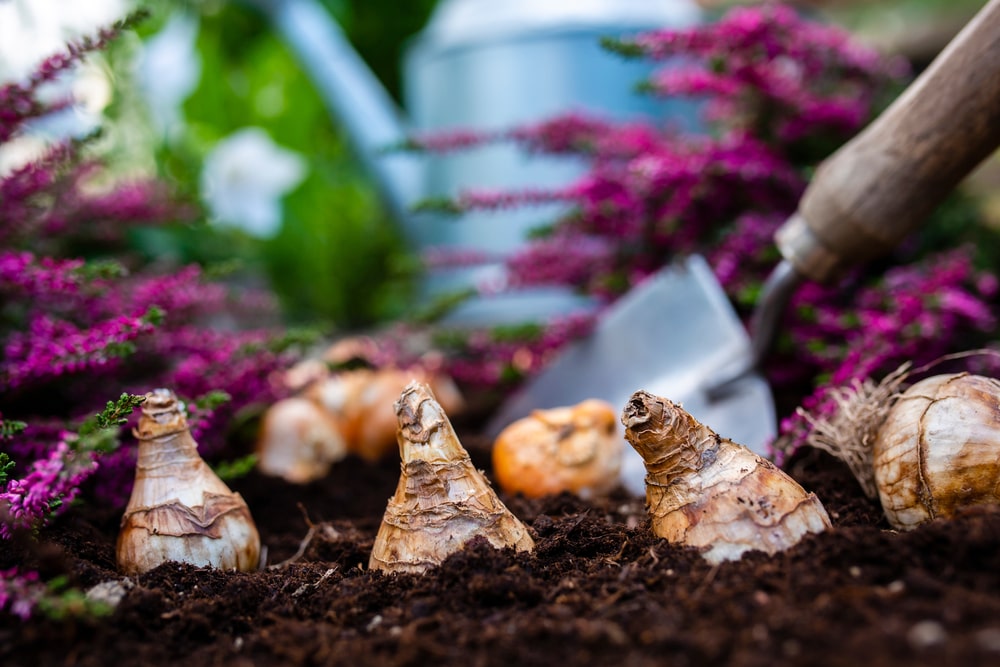I’ve already gotten my first bulb shipment in the store. Customers have been digging through them and asking when they can get them in the ground. So here is a very general guide on the correct time to plant most of the bulbs you’ll find offered in autumn.
Bearded iris rhizomes and fall-blooming bulbs will usually arrive anywhere from the middle of August through the middle of September. They should be planted as soon as possible. If not able to plant immediately, store for a week or two INDOORS but away from warm sunny windows.
A few bulbs, such as fritillaria (Checker Lilies or Crown Imperials) don’t have a protective coating (the papery covering on tulips, daffodils, and hyacinths). Plant those around the end of September.
When It’s a Bit Cooler
Most other bulbs—hyacinths, daffodils, alliums, muscari (grape hyacinths)—should go in around the middle of October here in Central Virginia. That, hopefully, gets us past the chance of having any more 90-degree days. They can go in later, if you like, but shouldn’t go in any sooner.
Tulips should not go into the ground until the middle of November. They are native to the mountains of Turkey and Russia. To them, warm weather signals top growth, and cold weather signals root growth. If you plant them while the soil is too warm, they will begin to grow tops at the expense of growing a good root system. While many fall-planted bulbs will do this, most will recover from it and go ahead and bloom in the spring anyway. Tulips may not, however.
Storing Bulbs
So if the best selection of bulbs is in September, what do you do with them until the right time to plant? All of these bulbs should be stored indoors at average room temperature and with good air circulation. When you buy them if they put the packages in a plastic bag, take them out of the plastic bag when you get them home. Tulips, particularly, are often stored in the refrigerator. Put them in a paper bag and place them in the crisper drawer. While they are in the fridge, keep apples and pears out as they release ethylene gas which can damage bulbs.
Planting Late
How late is too late to plant them? I’ve planted correctly stored bulbs as late as the first of January and they have performed okay. The later you plant, however, the more you run the risk of the bulbs drying out. So if you find a forgotten bag of bulbs in the garage in March, examine them. If the bulbs still feel firm to the touch and not dried up or soft, then go ahead and plant them. Most bulbs will likely skip blooming that spring but will forgive you and bloom the next spring—particularly if you are nice to them in October and top-dress with a commercial bulb food like Bulb-tone.
Have you ever planted bulbs at the right time, then we get a stretch of warmer weather late in November and the bulbs start sending up leaves? That seems to happen here every so often. If it happens in your yard, don’t worry. These bulbs are all native to areas that have cold winters so it might nip the very tender tips of the leaves (or it might not), but the bulbs themselves will be fine and should go ahead and bloom in the spring.
When it is finally time to plant, be sure you plant your bulbs at the correct depth (Here you’ll find that information on stickers on the packages or on my bulb care sheet). Top dress with a little Bulb-tone then stand back and let Mother Nature take care of the rest.
We have a great selection of spring-blooming bulbs in right now. Come in and pick out yours.

